The HTC One (M8) Review
by Anand Lal Shimpi & Joshua Ho on March 26, 2014 7:00 PM EST- Posted in
- Smartphones
- HTC
- Mobile
- HTC One
Camera Architecture & Duo Cam
The last HTC phone I used with two rear facing cameras was the EVO 3D. Thankfully the M8 One doesn’t fall victim to the 3D fad of the early 2010s. I remember seeing Intel demos years ago (think Moorestown timeframe) that showed a smartphone with two rear cameras, each with a different lens system, in order to computationally improve image quality. Unfortunately, the M8’s Duo Cam system doesn’t go that far either.
| HTC One Cameras | ||||
| HTC One (M7) | HTC One (M8) | |||
| Front Camera | 2.1MP | 5.0MP | ||
| Front Camera - Sensor | OV2722 (1.4µm, 1/5.8") |
S5K5E2 (1.12µm, 1/5") |
||
| Front Camera - Focal Length | 1.59mm | 1.83mm | ||
| Front Camera - Max Aperture | F/2.0 | F/2.0 | ||
| Rear Camera - Sensor | ST VD6869 (2.0 µm, 1/3") |
OV4688 (2.0 µm, 1/3") |
||
| Rear Camera - Focal Length | 3.82mm (28mm eff) | 3.82mm (28mm eff) | ||
| Rear Camera - Max Aperture | F/2.0 | F/2.0 | ||
| Secondary Rear Camera - Sensor | - | OV2722 (1.4µm, 1/5.8") |
||
The architecture is pretty simple. The primary shooter is still the 4MP UltraPixel camera from last year, without optical image stabilization (more on this later). The secondary sensor is actually the front facing camera module from the M7 (OmniVision OV2722, 1080p sensor with 1.4µm pixels).
Assuming you’re shooting in the right conditions, both sensors capture an image although only the image from the primary sensor is displayed. The second sensor captures what appears to be a wider field of view, as well as stores some depth information about the scene. This added data is stored outside of the normal address space for a JPEG file, and allegedly in a non-readable format (although my guess is with enough time you’d be able to extract the secondary image).
Images captured with Duo Cam enabled end up being around 60% larger than those shot with the rear sensor alone. Around 40% of the added file size is due to the secondary 1080p image, while the remaining 60% of the data is depth information.
HTC uses this depth information to enable a number of post processing effects that can be done on the One itself. Simply take a picture using the rear facing camera, tap edit, then effects and you’re presented with a list of all of the Duo Cam effects available on the One.
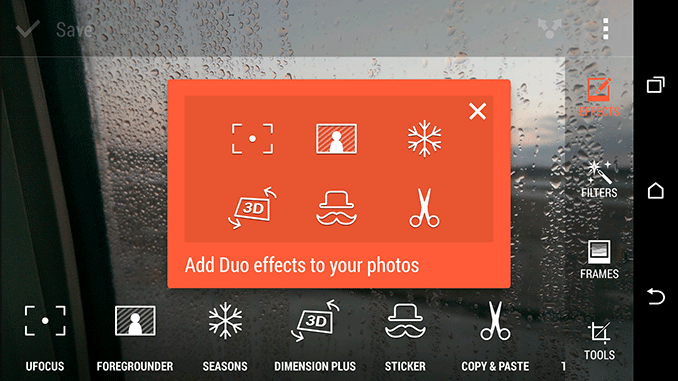
UFocus allows you to change the part of the scene in focus, either using the focus plane of the primary or secondary sensor. This isn’t completely open ended where you can selectively focus on anything in a scene. Instead, you’re basically toggling between focus captured by the primary or secondary sensor with the rest of the scene computationally put in/out of focus from what I can tell. In portraiture you end up with simulated bokeh, giving you heavily blurred backgrounds while keeping your subject in sharp focus. I was sitting across a table from Scott Wasson at a coffee shop and decided to snap a photo of him. Then I fired up UFocus, tapped on his face, and in about a second I had a processed result. I've embedded both images below, click on the buttons to toggle between the two images:

It’s an awesome effect, something that would take considerable time in post normally (not to mention time on a PC). You’ll notice the effect isn’t perfect though. Pay attention to the top of his left shoulder (on the right side of the image). There are clearly some difficulties determining boundaries between foreground and background. Scott then turned the camera on me. With my back to a scene with more depth enabling UFocus around took much longer to process, a matter of a few seconds. The result was even more impressive:

Here I’m clearly separated from the background. You can see some of the limitations of UFocus here as I’m not the only subject in focus. The table to my right is also in focus. It’s still impressive, and something that would be very difficult to do with manual editing (without multiple exposures).
UFocus is easily one of the most compelling applications for the Duo Cam. There’s no real flexibility with the feature though. Moving focus to the background is basically useless. And you can forget about using UFocus for anything other than a portrait. In most other scenes you end up with awkward focus boundaries.
Foregrounder is a pretty neat effect. Similar to UFocus you select a subject to be the focal point, but instead of blurring the rest of the scene HTC uses the depth information to apply shading effects to the rest of the scene. The result can be pretty dramatic if you’re shooting the right scene.
I came across this burrito shop in downtown San Jose, home of the Burritozilla:
The scene itself made for a great photo, but have a look at what happens when I use HTC’s Duo Cam to select the sign and apply an effect to everything physically behind it:
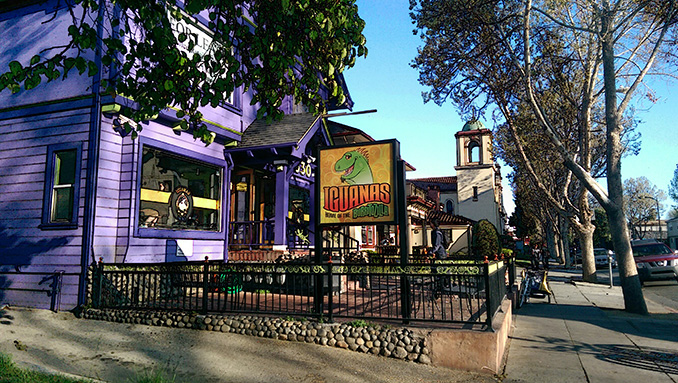
In the right scene the effect can be pretty cool.
Seasons is a bit cheesier although I can see it being quite popular with some folks. Here HTC uses the depth information as well as the image from the second sensor to create a panning effect through a scene while computationally adding in some element of a season (e.g. falling leaves or oversized snowflakes). The effect is best shown off in a video:
Dimension Plus uses the second sensor to enable a parallax effect on a given scene, allowing you to tilt the One in any direction to manipulate the effect. Unlike the other effects, this one can’t be easily exported to a video or other commonly used file format.
Stickers let you apply props to an image:
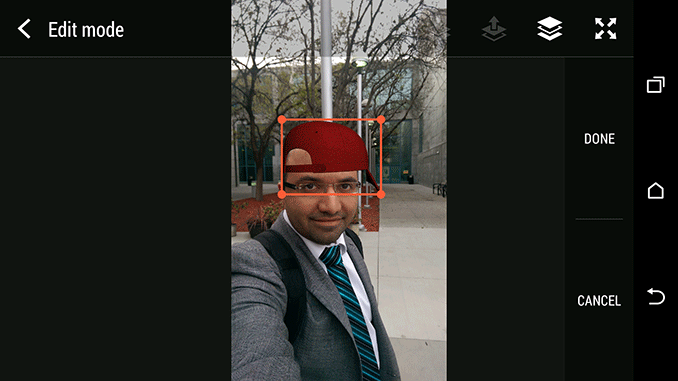

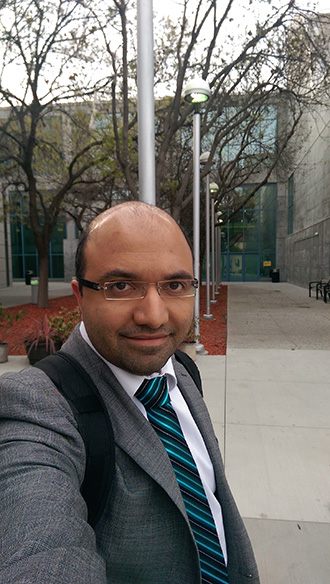 |
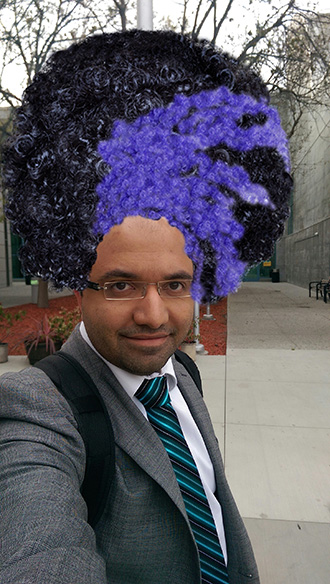 |
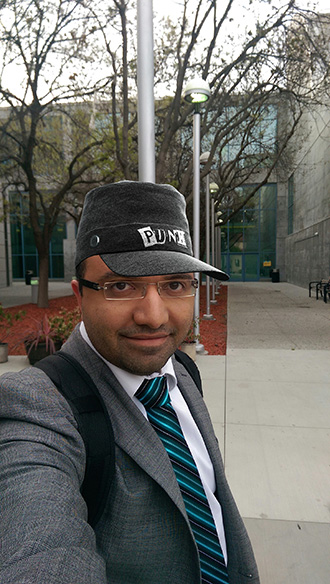 |
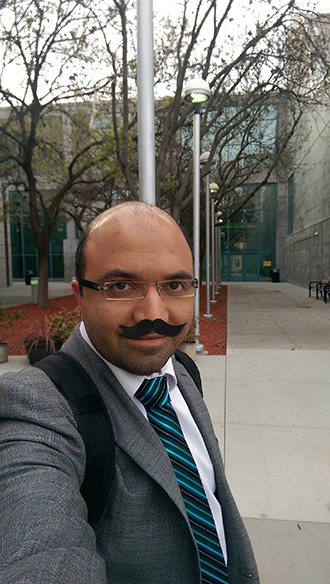 |
Copy and paste lets you quickly copy a person from one image and paste him/her into another. Even here, HTC is using the depth information captured from the secondary sensor to quickly separate the subject from the background. Typically these types of functions involve the user manually selecting the area of interest, here HTC is using the second sensor and a bunch of compute to do that for you. In practice even HTC’s Duo Cam approach requires user intervention, but not a ton if you’re fine with sharing an unpolished image. I figure many of these effects have pretty high comedic value, so something that’s a little less polished likely isn’t a problem.
Applying any of the Duo Cam effects is non destructive to the source image. You can cancel at any time, and hitting save creates a copy of the image - the original always remains intact (images with effects just get a numerical suffix e.g. _2).
There are a number of situations where Duo Cam won’t work. If you cover up the secondary sensor you’ll get a warning, but you’re still able to take shots. I’ve found the secondary sensor is pretty sensitive to things even partially occluding the image. The less obvious situations where Duo Cam disables itself automatically make sense when you think about the architecture of the setup.
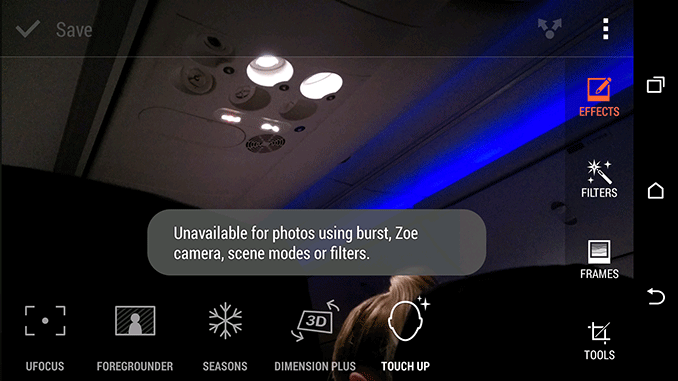
Very low light and macro photography both disable Duo Cam. In the former case you’re dealing with a fairly small 1080p sensor that likely becomes useless as noise levels rise. In the latter case, there’s just nothing left for the secondary sensor to do. Burst mode also disables the second sensor, probably because all of the ISP’s bandwidth is being used for delivering throughput for the primary sensor and can’t be split between the two. Dual capture (front + primary rear sensors in tandem) disables Duo Cam, probably for the same ISP limitations. Finally, Duo Cam also won’t work if the flash fires.
I can see many of the Duo Cam effects being fun things to play around with. I originally wrote them off pretty early on, but just in writing this section alone I can see them resonating very well with some users. They are fun. The good news is that most of the Duo Cam effects can be shared as simple JPEGs or videos with anyone, the bad news is they don’t really do much to further improve image quality. And ultimately that’s one of the biggest challenges with using the M8 to further increase marketshare at the high end.


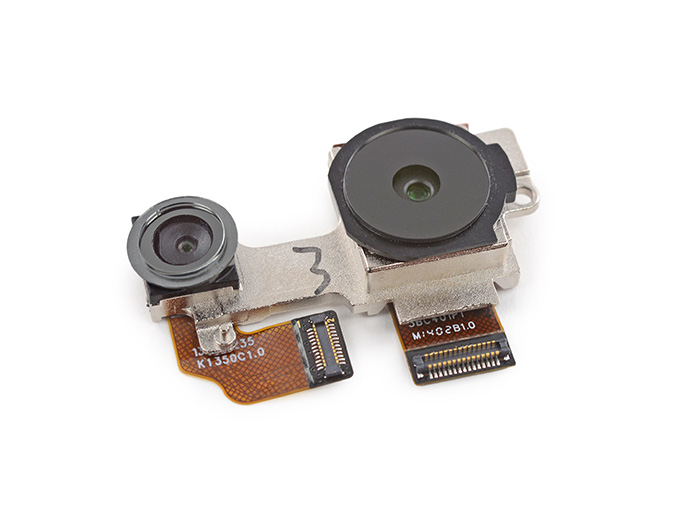
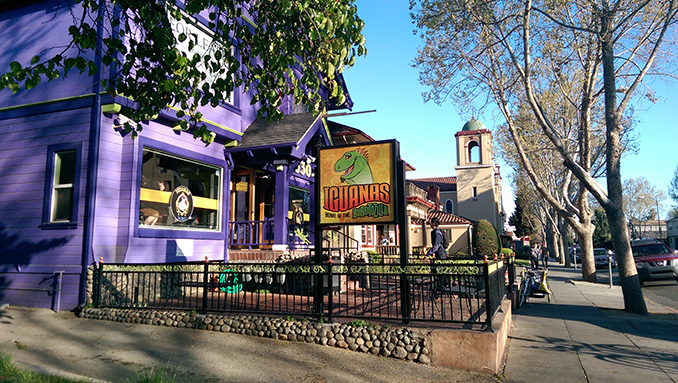
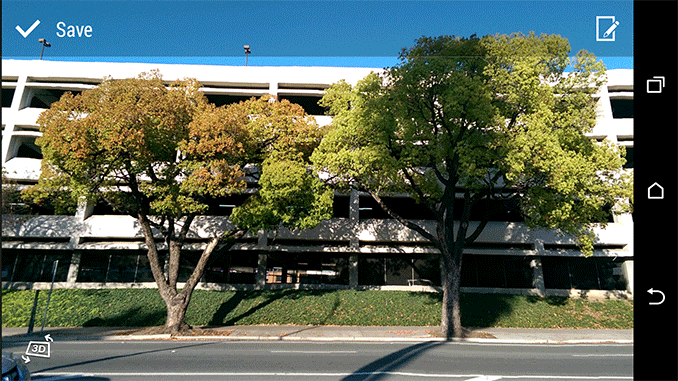








222 Comments
View All Comments
cgramer - Thursday, April 3, 2014 - link
Could you post a photo of the new One in its included case (and a photo of the included case by itself)? You mentioned it in the "what's in the box" section, but I'd love to see it. :) Thanks!cgramer - Thursday, April 3, 2014 - link
Never mind, I hadn't checked the gallery yet. D'oh!Jodiuh - Monday, April 7, 2014 - link
I want to print this out on all 60 pages or whatever and take it to the pool w/ some green tea and have my AT time, but I'm afraid I will ruin something if I read about it before experiencing it. Maybe I'll just look @ the pictures? :Dthekeelo_g - Thursday, April 10, 2014 - link
I'm curious which carrier model was tested. I've checked out a couple unboxing videos in anticipation of picking either this or the GS5 up tomorrow, and I'm not seeing the case or headphones mentioned in this review with the T-Mobile variant. Are they exclusive to getting the phone directly from HTC? If so, that's garbage.purerice - Saturday, April 12, 2014 - link
So I am rather behind the times in reading this article but it is a hoot to see 20 pages of comments virtually obsessed with... not the screen quality, not the performance, not the interface, not the feel, not the size, not the battery life, nor anything else... but the STEEEENKIN KAMERRRRAAAAAThe review is great and I enjoyed the various shades of Anand as well as the detail here.
I haven't been in the smartphone market for a while, but these types of reviews keep me in the loop for when I will be in the market. As such I appreciate them, even if most comments are single-minded.
elotrolado - Saturday, April 12, 2014 - link
This phone looks great. However, it is simply too large and heavy for optimal ergonomic utilization in my hands and comfortable pocketability for my pants (I have average male hands and don't wear skinny jeans). Shrink it to the phone and screen dimensions of the Moto X (perfect!), slightly improve the camera and keep everything else and it will be, by far, the best phone for most people.petar_b - Friday, April 18, 2014 - link
One reason I won't buy this phone again - is camera. When I zoom-in and crop photo to see desired subject better - I see pixels - I don't like it. Samsung galaxy doesn't have this problem. Regarding water proof tests - is it like rain proof or it's really water proof, or it can take photos in the sea...eagle_eye - Tuesday, April 22, 2014 - link
Could you please write a review on the Sony Xperia Z2? Thanks.mchart - Thursday, April 24, 2014 - link
FYI, I bought this at T-Mobile yesterday and their version of the phone does not come with earbuds or a case.Also, mine appears to have a slight bend in the ring near the screen where the SIM card goes. I bent it back to straight a little, but there is still a gap.
This is my first Android phone and it was the phone that compelled me to switch from the iPhone. That being said.. I'm missing a few things about the iPhone, and it's frustrating as all hell trying to figure out a new OS.
WiredTech - Friday, May 23, 2014 - link
I have the M8 and several others. Folks the M8 build makes the iPhone 5S a bit jealous. The camera is weak. Didn't stop me from buying it as I have other options and I love *everything* else about the M8.As so many like to point out, the camera isn't just about megapixels. The iPhone 5S has 8 and is very good. The Lumia 1520/Icon down-sample a 19MP image to 5 megapixels and the images are great (at only 5).
Are the M8's 4 megapixel images good? Not compared to my other devices mentioned above. I think there is no dynamic range and lots of CA.